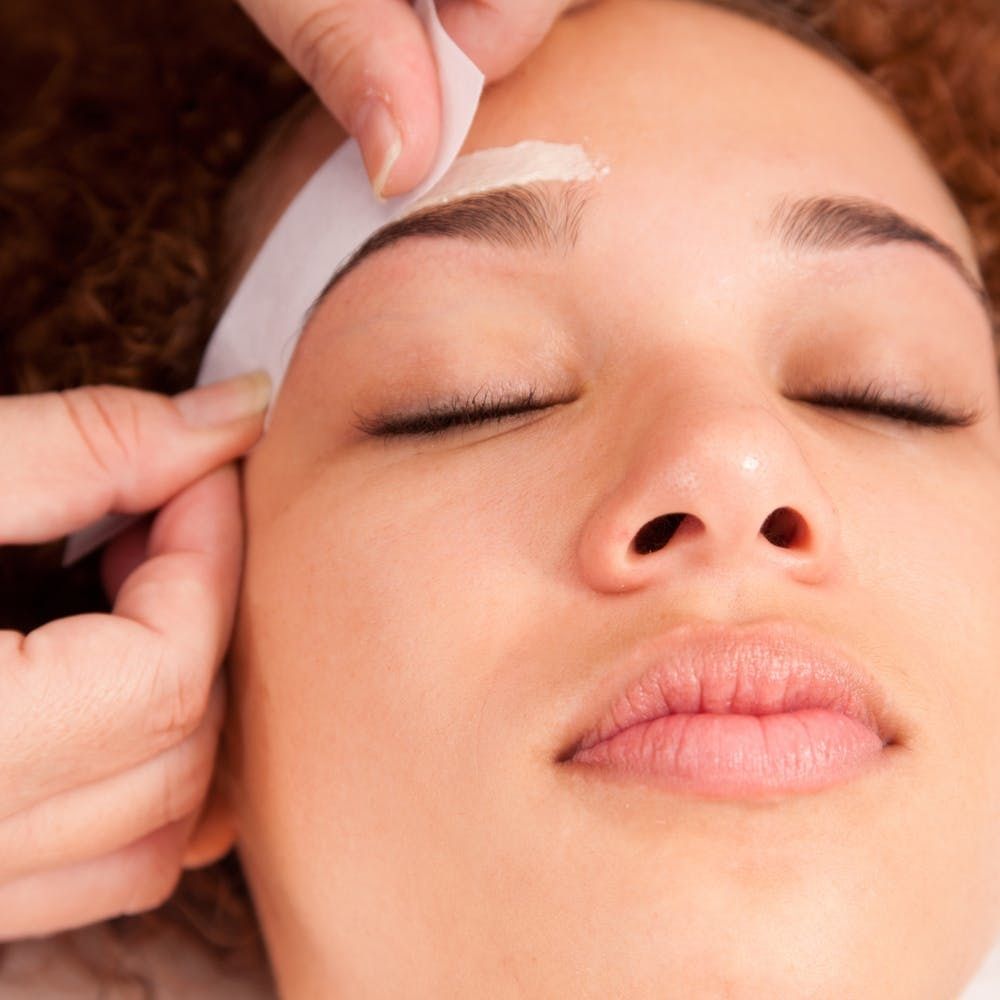Over the years, we’ve plucked, tweezed, waxed, and threaded our way to a selfie-worthy set of arches, but the question remains: Is one better than the other in terms of irritation, cleanliness, and killer shape? To find the answer, keep reading for the pros and cons of threading and waxing.
WHICH method CAUSES LESS IRRITATION?
According to NYC-based board-certified dermatologist Dendy Engelman, both threading and waxing can lead to irritation and ingrown hairs if the skin is not properly cleansed beforehand and moisturized after. “The face contains more hair follicles, as well as sweat and oil glands, than the rest of the body,” she explains. “This means more sensitivity to breakouts, inflammation, dryness, and other skin issues.”
While neither method can promise you’ll be walking out of the salon without a hint of pain or redness, they do vary in their levels of irritation. “With waxing, hot wax is spread over the whole area, including the skin, so when the hair is pulled out, the skin is also waxed,” explains Umbreen Sheikh, the founder of NYC-based Wink Brow Bar. Without the skin’s top layer, the area becomes more vulnerable to discomfort and infections. However, Robin Evans, a brow specialist and founder of her eponymous NYC-based salon, argues that there are plenty of wax options, including those infused with anti-inflammatory hibiscus and other soothing essential oils, to combat these negative effects. The temperature also plays a role. “If you see somebody going to wax you and the wax is dripping all over the place, it’s way too hot,” Evans notes. Instead, look for a sticky, honey-like consistency.
Threading, on the other hand, affects only the root of each hair being plucked. “Threading is a very precise, ancient technique,” Engelman says. “It can limit ingrown hairs because hair is pulled out in the same direction that it grows.” Since it’s less likely to disturb the area around your arches, it’s a popular choice among people with more reactive skin. (Photo via OpenmindedE/Getty Images)
SHOULD I BE CONCERNED ABOUT GERMS?
As threading has become more popular, there’s been concern over how cleanly the technique is, given that many threaders hold the plucking string in their mouth during the process. Shobha Tummala, the founder and CEO of NYC-based Shobha Threading, assures that even though the thread may touch the specialist’s mouth, it rarely causes issues. “They use their mouth to hold the thread taut for better accuracy, but this part of the thread never comes in contact with your skin,” she clarifies.
Waxing has put important measures in place, such as single-use applicators, to avoid the possibility of bacteria spreading on your face or to the substance. Evans explains that while most have antibacterial ingredients like honey, it’s important to go to a trusted salon. “When I wax a client’s brows, I make sure not to go over broken skin, acne, or any sort of other skin problem,” she says. “If I do accidentally go over an area of irritation, I immediately dispose of that waxing stick and grab a new one [to avoid contamination].” (Photo via Image Source/Getty Images)
WHICH WILL GIVE ME A BETTER SHAPE?
At the end of the day, we just want our brows to look good. Since pain and cleanliness are pretty even between waxing and threading, it all comes down to the shape you’re trying to create. “Threading, I think, is much better for aesthetics,” states Sheikh. “Especially for those looking for a perfectly shaped (or even feathered) brow, since you can precisely modify arches by each individual hair.” However, Malynda “Boom Boom” Vigliotti, a brow specialist and owner of NYC-based Boom Boom Brow Bar, contests that in today’s world, wax is just as capable of the same contoured shape, given the amount of control you have over the product. “In the end, it all comes down to going to a trained professional [whether a waxer or threader] whose aesthetic you admire,” she says. (Photo via Fabrice Poincelet/Getty Images)
Are you #TeamWaxing or #TeamThreading? Tweet us @BritandCo and let us know!
